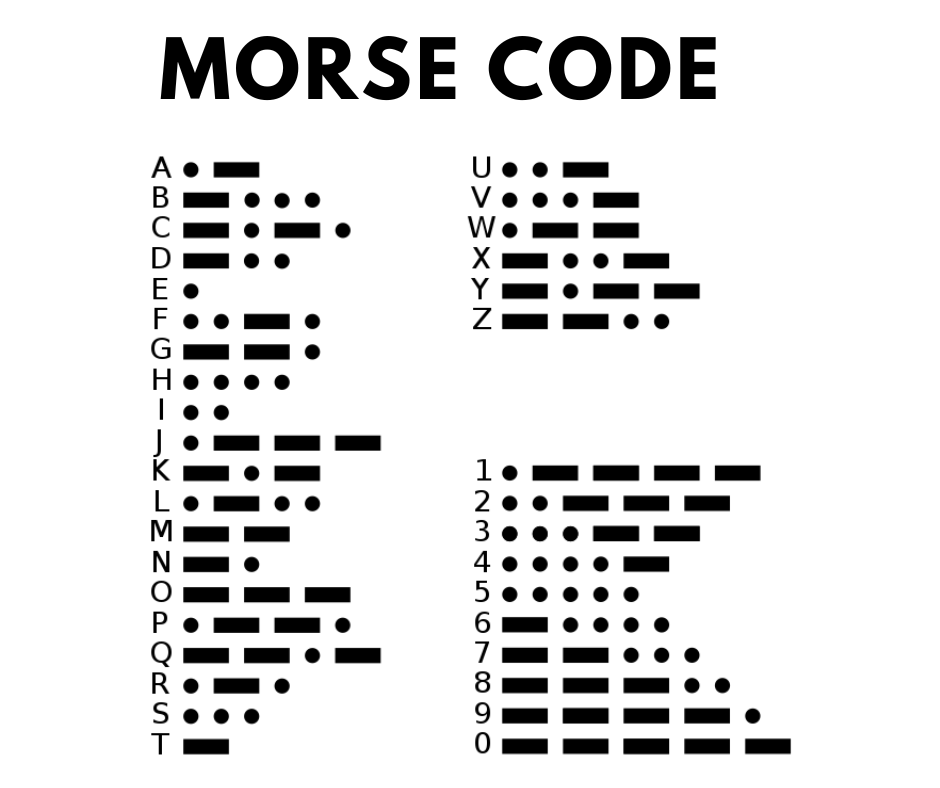Welcome to my blog! I'm excited to share my thoughts, experiences, and insights with you. So here we are to discuss Morse Code Invention And Systems and also other important things.
Morse code is a telecommunications method for encoding text characters as standardized sequences of two different signal durations known as dots and dashes, or dits and dahs. Morse code is named after Samuel Morse, one of the telegraph's inventors.
Morse Code refers to one of two systems for representing letters of the alphabet, numerals, and punctuation marks with a series of dots, dashes, and spaces. The codes are transmitted as variable-length electrical pulses or analogous mechanical or visual signals, such as flashing lights. The original "American" Morse Code and the later International Morse Code, which became the global standard, are the two systems.
During the 1830s, American artist and inventor Samuel F.B. Morse invented one of the Morse code systems for electrical telegraphy in the United States. A conference of European nations devised the International Morse Code in 1851 to account for letters with diacritic marks.
 Samuel F.B. Morse
Samuel F.B. Morse
Before the invention of the telegraph, most long-distance messages were carried by messengers who memorized them or carried them in writing. These messages could only be delivered at the speed of the fastest horse.
Messages could also be sent visually, using flags and, later, mechanical systems known as semaphore telegraphs, but these systems required the receiver to be close enough to see the sender and were not usable at night.
Using electricity, the telegraph enabled messages to be sent very quickly over long distances. In 1837, William Fothergill Cooke and Charles Wheatstone invented the first commercial telegraph.
They created a device that could send messages by lining up compass needles on a grid containing letters of the alphabet. Then, in 1838, Samuel Morse and his assistant, Alfred Vail, demonstrated an even more successful telegraph device that used a special code - Morse code - to send messages.
Telegraph messages were transmitted by tapping out the code for each letter as long and short signals. Dits are abbreviations for short signals (represented as dots). Long signals are known as dahs (represented as dashes).
The code was converted into electrical impulses before being transmitted over telegraph wires. On the other end of the wire, a telegraph receiver decoded the message by converting the impulses back into dots and dashes.
In 1844, Morse demonstrated the telegraph to the United States Congress using a now famous message "What hath God wrought".

It is necessary to ensure that the Morse code characters are the correct length for them to be easily read. Too long or too short, and the rhythm of the different characters is broken, making Morse code messages difficult to read. Part of the International Morse code "standard" is an agreed-upon definition of the various lengths of dots, dashes, and spaces.
Morse code also had a significant impact on the development of the railroad industry in America. It was used to coordinate the movement of trains, and it helped to improve safety by allowing dispatchers to communicate with engineers in real-time.
Overall, the invention of Morse code had a profound impact on the way people communicated and did business in America and around the world. It paved the way for the development of modern communication technologies such as the telephone and the internet, which have transformed the way we live and work.
Samuel F.B. Morse, the full name Samuel Finley Breese Morse, was an American painter and inventor who invented the electric telegraph. He was born on April 27, 1791, in Charlestown, Massachusetts, and died on April 2, 1872, in New York, New York (1832–35). He and his friend Alfred Vail invented the Morse Code in 1838.
The Modern International Morse code, also known as the continental code, was invented in 1848 by Friedrich Clemens Gerke and was first used for telegraphy between Hamburg and Cuxhaven in Germany. Gerke altered nearly half of the alphabet and all of the numerals, laying the groundwork for the modern code.
The Morse code is still widely used for amateur radio or ham radio applications. It enables ham radio contacts to be made all over the world with ease, especially when using low-power or more modest antennas. While the Morse code is not generally widely used, it still has applications for ham radio, and the above Morse code chart or Morse code table is useful to identify the main symbols used, so in this article, we discussed Morse Code and its details also we write about morse code translater in a very easy and simple way.